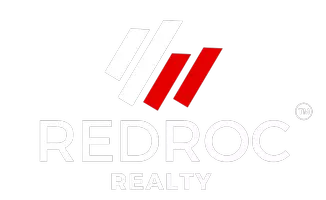Blog > The Real Estate Investing Myths That Could Cost You Thousands
Investing in real estate is one of the most powerful ways to build wealth. But what if everything you thought you knew about it was wrong?
Many investors jump into the market with preconceived notions—thinking they’re making a smart move, only to lose thousands due to outdated or misleading advice. In this post, we’ll bust the biggest myths in real estate investing and uncover the real truth that separates successful investors from those who barely break even.
Myth #1: "Real Estate Always Appreciates in Value"
The Truth: Not every market grows at the same rate—some decline, stagnate, or crash.
The Reality: Investors assume that just because home prices have risen historically, they always will. But market cycles, economic downturns, and local oversupply can stall or even reverse appreciation.
What to Watch For:
- Job Growth & Population Trends – If people aren't moving in, property values won't climb. Check U.S. Census migration trends.
- Supply vs. Demand – Areas with excessive new construction or shrinking demand will see slow growth.
- Local Market Conditions – A booming national market doesn't guarantee that your city is growing. Check housing inventory data at Redfin.
Investor Tip: Look beyond national headlines—study local trends, economic drivers, and migration patterns before assuming long-term appreciation.
Myth #2: "Rental Properties Are Pure Passive Income"
The Truth: Managing rental properties is rarely hands-off unless you have systems and a team in place.
The Reality: Many first-time investors underestimate the effort involved in maintaining a rental property. Even with a property manager, you still need to handle vacancies, maintenance, and unexpected costs.
Hidden Costs of Owning a Rental:
- Vacancies & Turnover Costs – An empty unit for two months can wipe out profits for the year.
- Maintenance & Repairs – Water heaters break, roofs leak, and tenants cause wear and tear.
- Property Management Fees – Expect to pay 8-12% of monthly rent for professional management.
Investor Tip: Plan for unexpected expenses and build a financial cushion—real estate is a long-term game, not a quick cash flow machine.
Myth #3: "The Cheapest Property is the Best Investment"
The Truth: Cheap properties can come with major hidden costs.
The Reality: Many investors chase low purchase prices without realizing that cheap homes are often cheap for a reason. Whether it's a bad location, high crime, poor schools, or expensive repairs, low-cost homes can turn into money pits.
Red Flags for “Too Good to Be True” Deals:
- Neighborhood Decline – Check crime stats & job growth before assuming a deal is good. Use City-Data crime reports.
- Structural Issues – Foundation problems or outdated plumbing can turn a cheap property into a financial disaster.
- Limited Buyer Demand – If no one wants to rent or buy in that area, your investment will struggle.
Investor Tip: Always balance price with location, demand, and condition. Sometimes paying more upfront saves you money in the long run.
Myth #4: "Flipping Houses is Fast, Easy Money"
The Truth: Flipping is high-risk, costly, and market-dependent.
The Reality: TV shows make it look easy, but flipping requires timing, experience, and risk management. Renovation budgets often skyrocket due to unexpected issues.
The Biggest Flipping Costs:
- Holding Costs – Mortgage payments, insurance, and taxes while the home is on the market.
- Renovation Overruns – Contractors can run into delays, material shortages, and permit issues.
- Market Timing Risk – If prices drop before you sell, your profit evaporates.
Investor Tip: If you’re considering flipping, have a detailed budget, multiple exit strategies, and at least a 20-30% profit margin cushion.
Myth #5: "You Need to Be Wealthy to Invest in Real Estate"
The Truth: Smart investors use creative financing, partnerships, and leverage to invest with little upfront capital.
The Reality: Many believe that you need huge savings to start investing, but there are multiple strategies to get into the market without six figures in cash.
Ways to Invest Without Large Upfront Capital:
- House Hacking – Buy a duplex, live in one unit, and rent the other.
- BRRRR Method – Buy, Rehab, Rent, Refinance, Repeat.
- Partnering with Investors – Find someone with capital and split profits.
- Seller Financing – Some owners allow monthly payments instead of a big down payment.
Investor Tip: Research creative financing strategies and focus on leveraging other people’s money (OPM) to start building wealth.
Final Thoughts: Real Estate Success Starts with the Right Knowledge
Real estate investing is one of the best ways to build wealth—but only if you understand the real risks and opportunities. Avoid these common myths, do your own market research, and approach investing with a clear, data-driven strategy.
📲 Looking for expert guidance on your next investment? RedRoc Realty is here to help. Let’s connect and strategize your next move!
📌 Contact us today → www.redrocrealty.com
#RealEstateInvesting #SmartInvesting #RentalProperties #FinancialFreedom #RedRocRealty #InvestmentStrategies
